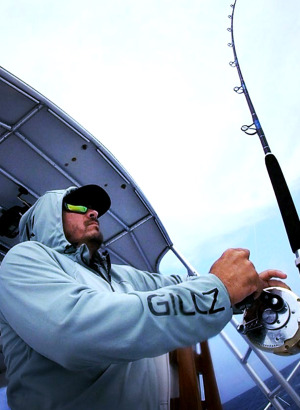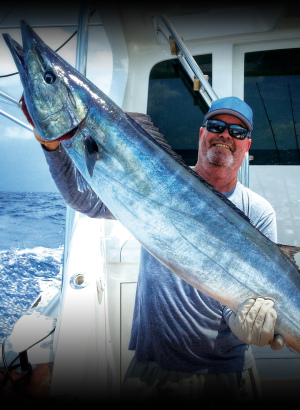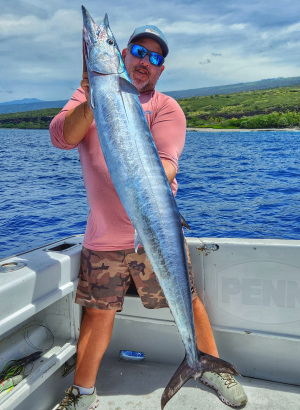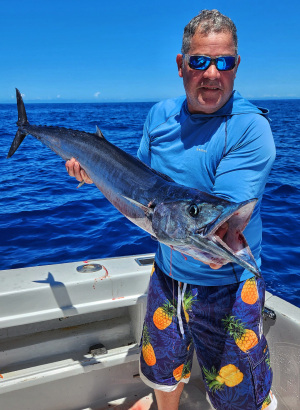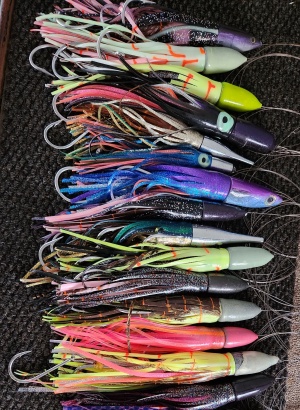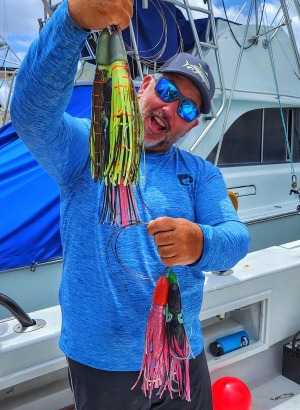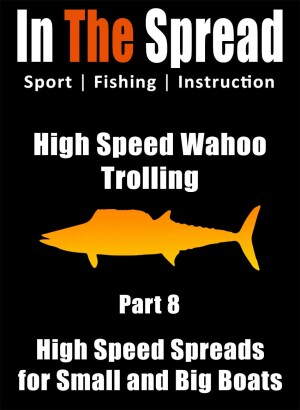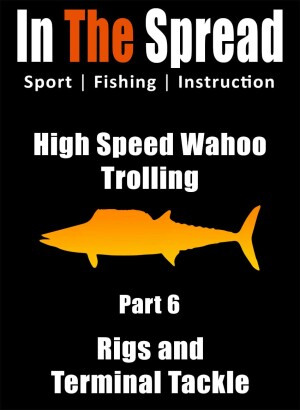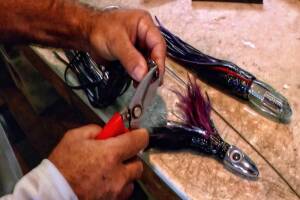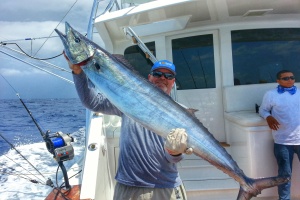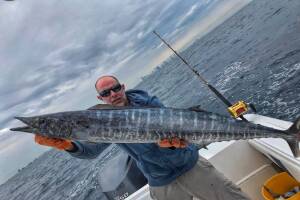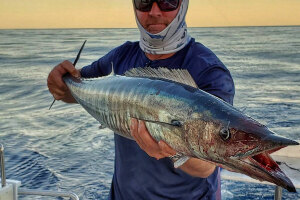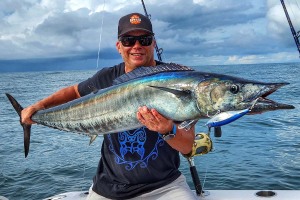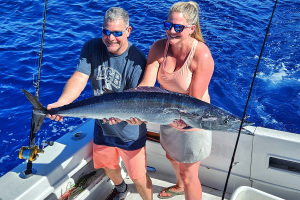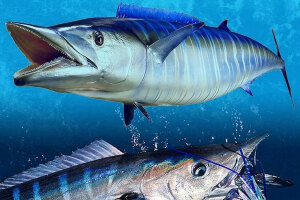Wahoo fishing involves various techniques like trolling and baiting, but the best lure depends on conditions, structure, and water column holding. Wahoo behavior is influenced by structures, water temperature, and color. Understanding wahoo behavior and choosing the right lures helps increase success on the water.
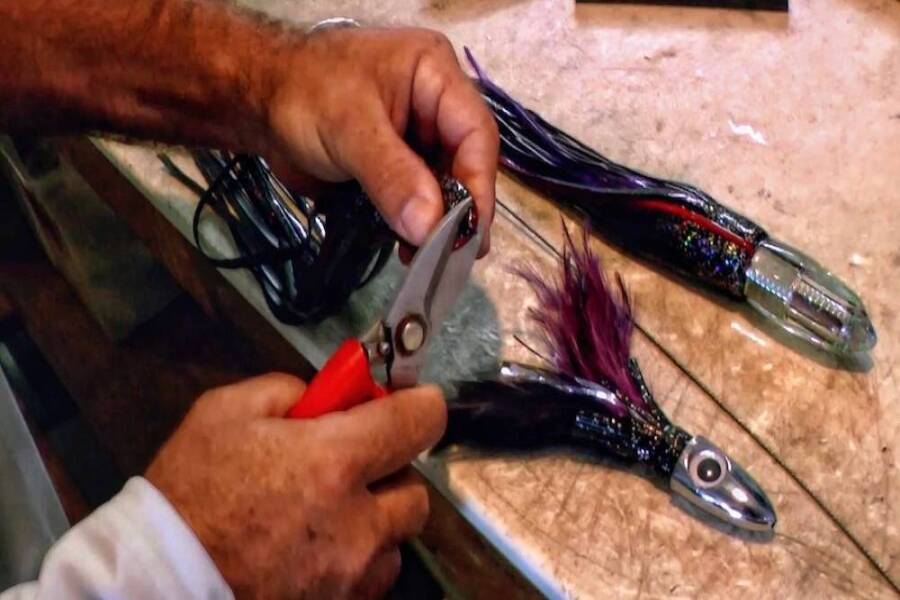
Wahoo Fishing Lures for Trolling
Trolling Lures for Wahoo Fishing
When you start down the rabbit hole of wahoo fishing lures and baits, specifically for trolling, fishermen always want to know what's the best lure or bait. Wow. There is just no single answer. It depends on the conditions, the type of structure you are working and where in the water column fish are holding. Plus, every good wahoo fishermen will have a different answer. Even when you think about the variety of wahoo fishing techniques, albeit trolling, casting bombs and jigs or baiting there are an endless number or combinations that work to trigger wahoo bites.
You also have to consider that lots of wahoo are caught by accident, as a by-product of fishing for something else, like dolphin, billfish, kingfish, etc. The best wahoo fishermen I know each have a specific system or program they are confident in.
The Influence of Structure on Fishing
Structure like reefs, sea mounts, oil platforms, even open water has strong influence on optimal wahoo fishing methods. What works one day may not work the next day. Conditions such as water temperature, water color, the moon, current, tides and upwelling dictate wahoo behavior. When you combine structure and conditions that variables multiply. You may not even in advance what will be happening when you get to your spot. Adaptability and preparation are critical. You have to be nimble enough to switch techniques to fit the current conditions.
Wahoo are a super predator. Solitary by nature, they will school in large packs when on the move or chew. This is a tricky species, for sure. The one thing that is certain is that they are eating machines. Built for the attack, wahoo are like stout missiles with razor sharp serrated teeth, which are by design made to slash and kill. At times, wahoo can be extremely competitive, ravenous and willing to attack anything in the water. At other times, they will be persnickety, wary and certainly boat shy.
Having a keen understanding of how wahoo behave will certainly help in deciding which wahoo lures or baits to go with. The first thing to consider is that wahoo fish typically hang out around structure, whether that’s a weedline, floating debris, reef, wreck, current edge, a ledge or damn near anything where the water temperature is right and bait aggregates. All these types of structures hold the baitfish that wahoo feed upon, so they stick around these areas because of the abundance of food.
Categories of Presentations
When you get right down to what type of lures or baits to use, you should be familiar with a broad swath of offerings. Wahoo presentations fall into a few main categories: skirted lures, skirted baits, vibration lures, diving plugs, bombs and jigs. You also have to give consideration to lures and skirt colors. Wahoo tend to prefer darker hues. Purple and black, red and black, pink and blue, blue and white or yellow-and-green, orange/black, ahi, mackerel, tiger patterns are all good color options. Of course, this list is not an absolute. It is recommended to have a good selection of color combinations.
As far as what you use, lure types all have different ideal speeds and will not always work well together. Know what you are using and how it performs in the water, before putting out a hodgepodge of presentations.
Preparedness starts in the mind. The more you know about wahoo lures and baits, the more success you are likely to have on the water.
To learn more about wahoo trolling, lures and tackle, check out our library of Wahoo Fishing Videos.
The Range of Lure Choices for Trolling
As one of the fastest fish in the ocean, as well as being a super aggressive ambush predators, the idea of something zipping past a wahoo that resembles, even remotely, a bonito, a flying fish or something similar is just too irresistible. Wahoo have a tendency to bite at damn near anything going past them, even when they’re not hungry. With wahoo trolling lures, especially the high speed variety, going so fast through the water, wahoo don’t have time to inspect it, so they will just take a slashing whack. If you are smart, you will be using bigger hooks and thicker cable, so that slash attack ends up getting them snared.
Wahoo really love artificial lures, so when it comes to trolling at speed, look for heavy jet heads or bullets with high profile skirts or run a selection of bibbed and bib-less minnows that stay down in the water. If you can combine a selection of skirted lures and diving plugs or vibration lures that run well at a given speed, you should be in a good position to get strikes. Let's break out each category and see what produces. This is not an absolute list, as there are tons or lures that perform. Instead, this is just a short list of wahoo trolling lures that are proven winners.
Skirted Lures
Probably the one type of lure associated with wahoo fishing more than any other is the skirted trolling lure. The usual suspects range from glass heads, resin heads, metal head jets or bullets skirted for maximum profile and weighted to swim below the surface. When you are pulling lures throught the water at speeds of 14-20 knots, you need something that will cast an enticing profile and not ride on the surface. Wahoo are not typically surface feeders, when it comes to lures.
How you rig your skirted wahoo trolling lures is pure preference. The sheer number of ways to rig lures is wide open to debate. The method I have found success with is as follows. A 9/0 or q0/0 extra extra strong stainless hook is crimped to 3-4 feet of 400 lb cable or No. 19 piano wire attached to a 400 lb ball bearing snap swivel which is crimped to 30-50 feet of 150-400 monofilament shock leader. The shock cord is then attached to 16-48 ounce cable through trolling lead with a ball bearing snap swivel. The ball bearing swivels are a must. The further back you run your lure, the lighter the lead. When lures are close to the boat, there is more prop wash to contend with, so you need the lures a little deeper. As you move further back, the skirted trolling lures with have cleaner lanes of water to run in, so there is not as much need to get them as deep.
No matter what type of lure or bait you are rigging for wahoo, be sure to use the best in swivels, crimps, chafe gear, shrink tube and other connections. Wahoo are brutal on rigs and tackle. Another key point is that wahoo do have a tendency to attack the lead, so it is critical that your lead has cable on both ends. You do not want to loose entire rigs to a bite off.
The available options for high speed trolling lures are endless. Here is a very short list of a few proven wahoo lures. My advice when it comes to sourcing excellent skirted lures is to peruse your local tackle shop looking for heavier glass heads, resin heads, metal head jets or bullets. You can always change out the skirts to meet your desired color scheme or profile size. The head makes all the difference.
- Iland lures express, sea searcher or mistress
- Ali'i Kai Lures by Shawn Rotella
- Sumo Buddha Lures
- Marlin Magic Ahi Pussy
- Moyes Ono Rocket
Swimming Plugs
When fish suspend at a given depth, towing a saltwater hardbait trolling lure or “swimming plug” above them near the surface or well beneath them isn't going to get the achieve much. By identifying where in the water column wahoo are hanging enables you to drag lures right past them. Many times, the difference between success and failure is a few feet. Be precise in your presentations.
Not only do swimming plugs afford you the ability to get a lure down to an exact depth, they are also ideal for covering smaller areas of water, especially when you know wahoo are in the area. By design, diving plugs swim from just beneath the surface to depths exceeding 40 feet, wobbling and throwing off fish-attracting vibrations. They’re one of the most potent, low-maintenance trolling baits ever. As you move through the water resistance on the bib will pull the lure down and also help to provide the lure with its action. This type of lure requires minimal rigging and some even allow you to swap out the bibs when damaged.
This is of course not high speed trolling, but a more finesse style of trolling. Most bibbed lures will run well at speeds between 4-12 knots and quickly reach the portion of the water column where the wahoo are suspending. This makes them lethal for reaching wahoo hanging a little deeper over structure or in areas of upwellings or rough water.
Just like their high speed brethren, there is no end to the number of choices one can make when looking to purchase an assortment of swimming plugs. My only advice is to go with a purpose built lure, so the lures do not get annihilated the first time in the water. Here is a selection of great hardbody swimming plugs that will stand the test of repeated viciousness of a wahoo attack.
- Rapala X-Rap Magnum
- Rapala CD Magnums
- Sebile Koolie Minnows
- Yozuri Hydro Magnums
- Nomad DTX Minnow
- Halco Laser Pro
You can learn some great points with our video on Trolling Swimming Plugs
Vibration Lures
The vibration lure or bibless minnow style of lure is a classic when it comes to wahoo fishing around the world. Just about every multipurpose fishing boat I have ever been on had a few Yo-Zuri Bonitas. The vibration lure is an absolute must have. They are tough, relatively inexpensive and durable, consider how much abuse a wahoo exerts with its brutal attack and serrated teeth.
Given how well vibration lures swim at variable trolling speeds means fishermen have an almost unlimited ability to use them in diverse conditions. No matter if you are fishing in calm seas or rough, these hardy lures will get down and handle business. There may be no easier lure to run for wahoo.
Trolling speeds for vibration lures range from 6-20 knots, depending on the exact design and sea conditions. You can expect a very tight shimmy in the water, as they wander at running depths of 6-15 feet. A useful technique is to run a vibration lure behind a planer, to get it down even deeper in the water column.
Some of the more readily available vibration lures or bibless minnows fished across all oceans where wahoo roam include:
- Halco Max or Trembler
- Yo-Zuri Sashimi Bonita
- Mag Bay Desperado
- Braid Marauder
- River2Sea Killer Vibe
With any of the aforementioned trolling lures, it is imperative to utilize a wire leader when selectively dealing with this toothy predator. If a wahoo strikes the head of your lure or swallows the entire presentation, your monofilament or fluorocarbon leader will sever upon contact with the teeth, no matter how thick or heavy it is. Be wise and go with the wire insurance policy.

